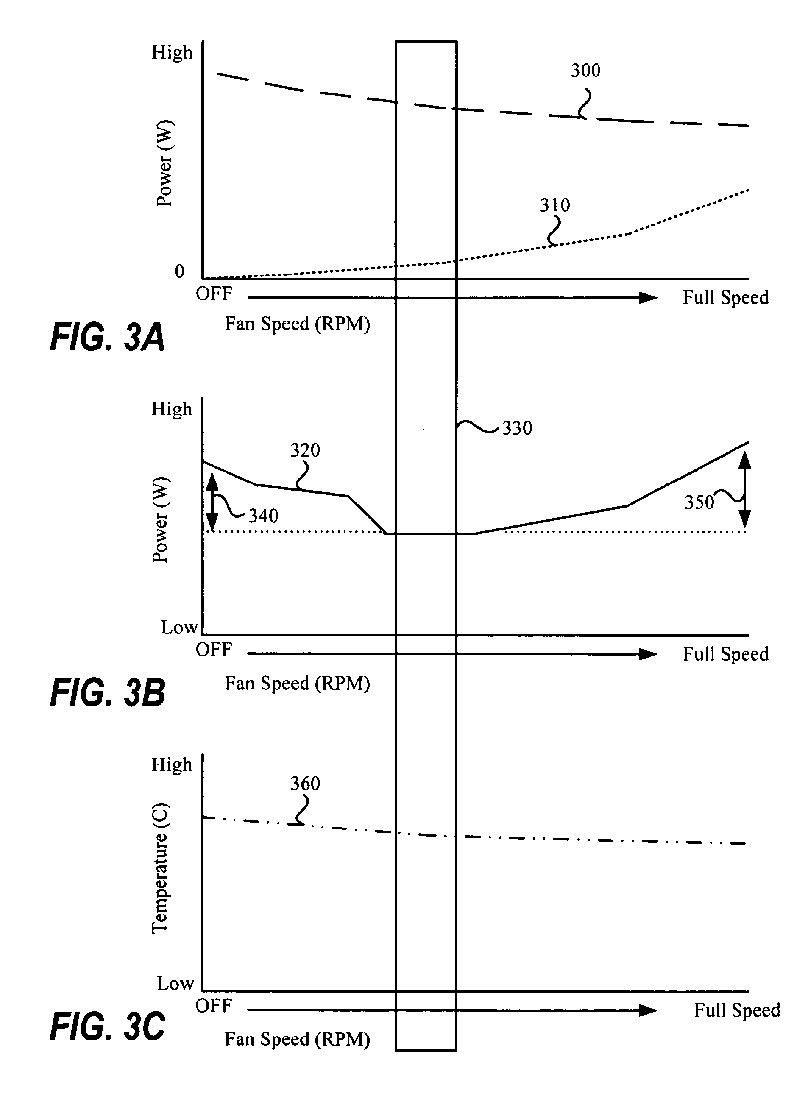Intel Patents Fan Speed Control to Cool CPUs
Intel has been granted a patent which ties cooling fan speed to CPU leakage power.
The document, originally filed in September 2008 and approved by the USPTO on March 27, 2012, describes a process to calculate the fan speed that will decrease platform power the most.
The patent specifically refers to CPUs that operate in a low temperature state with a fan running at low speed. According to Intel, the power used to operate a fan can be offset by saved processor power. The process to determine the perfect fan speed would include
- measuring the processor power and the fan power when it is initially determined that the processor is operating in a low temperature state prior to any fan speed adjustments - calculating the system power prior to any fan speed adjustments - increasing the fan speed - measuring the processor power and the fan power for the increased fan speed - calculating the system power for the increased fan speed - dynamically adjusting the fan speed based on changes to the system power - measuring the processor power and the fan power for the dynamically adjusted fan speed - calculating the system power for the dynamically adjusted fan speed - selecting the preferred speed when the system power is determined to be substantially at lowest value
It is interesting to note that this patent highlights a scenario in which a fan is not just used to bring the temperature of a CPU down from a certain exceeded threshold, but is leveraged as an almost-always-on option to reduce the power consumption of a CPU platform. The idea obviously refers especially to the problem of leakage power that can be reduced by containing the CPU temperature.
Get Tom's Hardware's best news and in-depth reviews, straight to your inbox.

Douglas Perry was a freelance writer for Tom's Hardware covering semiconductors, storage technology, quantum computing, and processor power delivery. He has authored several books and is currently an editor for The Oregonian/OregonLive.
-
crisan_tiberiu lmao, how can u pattent this? so, now if i want to control a fan to cool a CPU i have to pay intel a fee? lame..Reply -
Goldengoose Can't see any negatives to this in all honesty.Reply
Anyone heard anything more about the fan that will rotate backwards at full speed for a few seconds to clear dust? Has it been implemented into the commercial field yet?
-
DjEaZy ... wat'tha'funck? Need to hurry up and patent breathing... o'snap... intel already did it...Reply -
Goldengoose crisan_tiberiulmao, how can u pattent this? so, now if i want to control a fan to cool a CPU i have to pay intel a fee? lame..Reply
I think the difference is this will focus on saving power and changing based on power going to CPU as well as tempreture. slight difference in just changing based on current tempreture. Means it can combat incomming heat increases. -
willard crisan_tiberiulmao, how can u pattent this? so, now if i want to control a fan to cool a CPU i have to pay intel a fee? lame..I guess your righteous indignation prevented you from actually reading the article. Because if you had, you'd have seen that Intel isn't patenting controlling fan speed, it's patenting calculating the optimal power usage split between a fan and CPU to produce the lowest temperatures possible in low voltage, low fan speed chips.Reply
I think I need to stop expecting posters on Tom's to use their brains when the word "patent" shows up in an article. -
CaedenV So now that they are getting out CPUs that hardly need a fan (even my i7 stays plenty cool unless under a heavy load at low fan settings, and even then the dinky stock cooler was adequate... though I still replaced it) they are finally getting to the point where there is really intelligent fan control. Where was this tech back in the days of the P3 and P4 CPUs where even the entry level offerings could cook you a nice breakfast and warm the water for your shower in the morning?Reply
At any rate, Goose is right, it is basing the fan speed on usage, and then calculating if it takes less power to let the fan stay at idle, or to crank it up to prevent leakage, which is quite different than saying 'at temp X set fan at RPM Y' which is how we currently do things. -
xenol I did this for my solo senior project. In fact, everyone had to. How is this patentable?Reply
Okay, so maybe not in the same manner as Intel, but still.
